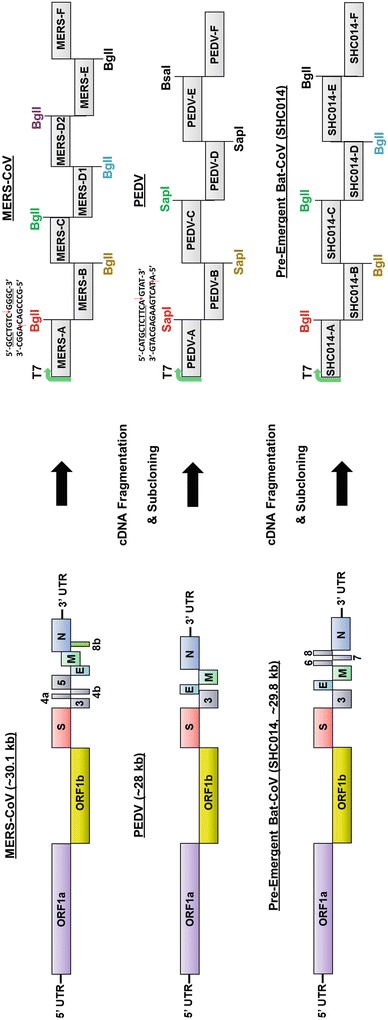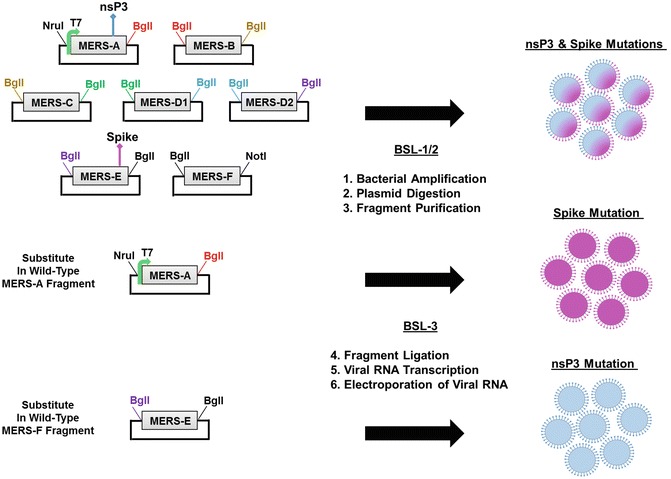Fig. 2.


Organization of coronavirus genomes and infections clones used to generate recombinant coronavirus. (a) Left: Genome organization of MERS-CoV , PEDV , and SHC014. Right: Organization of coronavirus cDNA fragments used in subcloning in order to generate a genome-length cDNA template prior to transcription. Color-coded restriction sites denote distinct type IIS ( SapI) or type IIG ( BglI) restriction sites. An example of each is shown for the first junction encoded in the MERS-CoV and PEDV genomes. (b) A benefit of the RGS infectious clone system is the ease of directed genome mutation. By swapping fragments between wild-type and mutant MERS-CoV , or even between various coronavirus species, useful CoV variants such as wild-type spike or open reading frame mutants can be rapidly generated in order to understand the role of specific mutations or viral genes. Multiple infectious clones with different genetic mutations can be generated in parallel provided that the mutations are on different fragments. Example: Three different viruses are generated from mutations in the nsP3 gene (fragment A, blue) and the spike gene (fragment E, purple)
